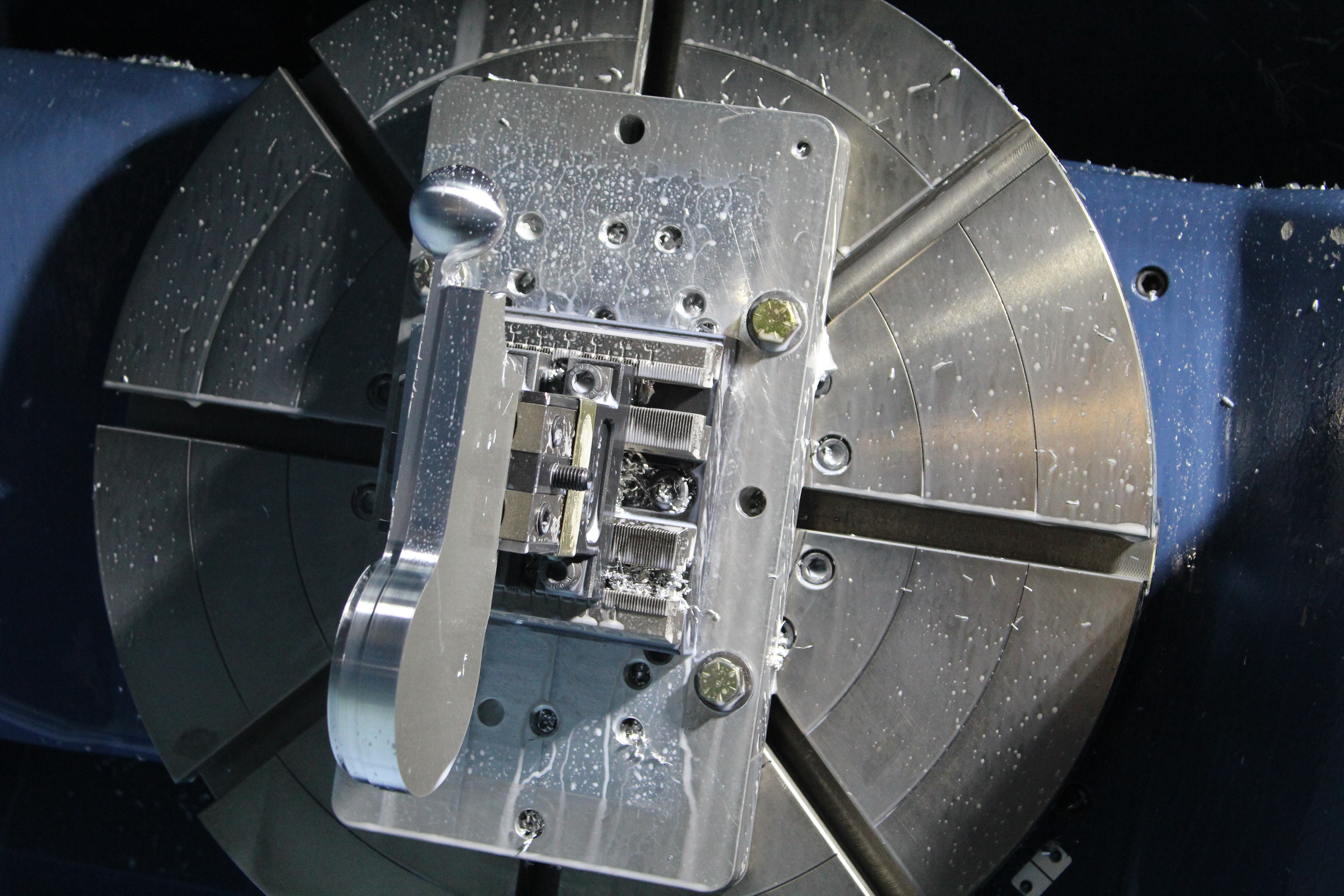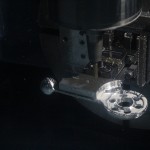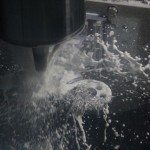12/21/15 Increasing Productivity and Profits

Straightline Precision Industries Inc. recently faced the challenge of machining an aerospace component in the most efficient and accurate way possible. The component, part of the nose gear steering system of a commercial aircraft, required numerous operations and tight tolerances. “The traditional method of making this part in six operations on a 3-axis vertical mill was completely possible,” said D. J. Paulson, one of the founders of Straightline. “However, the multiple fixtures that would be needed to access all of the angles necessary to complete the part would be costly, not to mention greatly impact the lead time required to complete the parts.”Any changes in design during production would lead to costly changes in fixturing and set-ups. “We pondered the idea ofmachining the part in our Matsuura MX-520 5-axis milling machine in order to give us access to the multiple sides of the part in only two set-ups, one being the main machining operation, the other being a simple operation to remove the material in the area by which the stock would be held,” said Paulson. A traditional vise set-up was also considered, but rotating a vise on a 5-axis machine causes many interference problems and the machine operator would not be able to access the undersides of the part in one operation. Prepping the material with a dovetail and using a dovetail fixture mounted on a pedestal above the table would allow for the needed clearance, but would also require tying up spindle time prepping stock material for machining. “We turned to our trusted source of high quality workholding products, Mitee-Bite,” said Paulson. “We have for many years utilized its Pitbull clamps for dense fixturing in our horizontal machining center, as well as its Talon Grip jaw inserts for low profile workholding in our existing vises. Under the recommendation of Andy Arsenault at Mitee-Bite, we were steered in the direction of a new5-axisworkholding fixture called the Loc-Jaw. It is highly versatile in that it is fully adjustable in the width of parts that it can clamp, because the moveable jaws are mounted on a serrated base for maximum adjustability. The grippers themselves are hardened steel knife edged grippers that hang onto only 1/8 inch of material. The grippers physically ‘bite’ into the stock to create a positive lock on the material. They hold the workpiece extremely rigidly and provide maximum clearance for cutters, etc.”
The first benefit of the Loc-Jaw system the Straightline team noticed was the time saved in not having to prep stock prior to machining. There is a direct cost savings since machine spindle time and operator time are not necessary for stock prep. The system is also very quick to load and unload parts. The other benefit noticed immediately was that the Loc-Jaw itself provides the workpiece a generous amount of vertical spacing up off the machine table, giving ample access to the underside of the workpiece without the usual interference of the spindle and table on the 5-axis machine. “This proved to be an absolute must on our aerospace parts because many of the operations come in from angles on the underside of the part,” said Paulson. Paulson noted one situation in particular where the Loc-Jaw paid off. Some design changes were made to a part when they were part way into production. “Normally, conventional fixturing and set-ups would need to be changed to accommodate these design changes, but with the Loc-Jaw system there is no fixturing to worry about and the changes were simply programming related,” he said. “The system has proven to be as rigid as conventional vise set-ups. We are able to successfully machine any material, including very hard alloy stainless materials, in the Loc-Jaw grippers. We are running a 20,000 RPM high torque spindle and are pushing feeds and speeds that are easily comparable to what we would normally run with parts held in vises. Surface finishes are near perfection,machine utilization is increased, accuracy of the parts is better and we have not looked back to the old way of doing things. This part we are machining is 7075 aluminum. All of the parts on which we have been using the Loc-Jaw system are tight tolerance aerospace parts, many using exotic materials, and it has held up to the challenge and lets us tackle difficult parts with ease.” Set-up time on the system only takes an operator a few minutes since it is just a matter of bolting the unit onto the machine table and adjusting the gripper spacing. Stock as narrow as 1/2” can be held with no prep. With the addition of another base plate, the operator can space two grippers far enough apart to hold any part that will fit within the machine’s travel. Straightline produces billet aluminum pilot seat bases, auto pilot switch housings, landing gear components, engine control levers and many more difficult to produce parts, all of which use the Loc-Jaw system. “There is no limit to what can be machined using this system, and its flexibility and ease of use saves us time and money,” said Paulson. “But most of all, it increases productivity and profit.” Straightline Precision Industries Inc. was founded in 1996 by Mike, Dennis and D. J. Paulson to produce machined and fabricated components for local industry. Beginning with manual machines in a garage, Straightline Precision has grown to become a diverse contract manufacturer of components for the aerospace, instrumentation and sporting goods industries. Today all of its machines are newer model CNCs from high quality manufacturers. In 2006 Straitline Components was added as an in-house brand that designs and manufactures high end aftermarket mountain bike components. “We have built our entire business on the concept of continuous improvements, and it shows in our work,” said Paulson.
As seen in Manufacturing News www.mfgnewsweb.com
















